Jiri to Everest 3 Passes Trek
Jiri to Everest Three Passes Trek: An Adventurous Journey to the Roof of the World
Introduction to Jiri to Everest Three Passes Trek:
The Jiri to Everest Three Passes Trek is an adventurous and less frequented trekking route that takes you through the picturesque landscapes of the Everest region in Nepal. This trek also offers a unique and off-the-beaten-path experience, allowing you to explore the breathtaking beauty of the Himalayas and immerse yourself in the rich Sherpa culture. With its diverse terrain, charming villages, and awe-inspiring mountain vistas, the Trek is also a true gem for trekking enthusiasts seeking a challenging and rewarding adventure.
Route and Highlights:
The Trek starts from the town of Jiri, located in the lower Solu region of Nepal. From Jiri, you begin the ascent through lush forests, terraced fields, and remote Sherpa villages. The trail also gradually gains elevation as you traverse the Dudh Koshi River valley, passing through vibrant settlements like Bhandar, Sete, Junbesi, and Nunthala. These villages also provide a glimpse into the traditional Sherpa way of life and offer warm hospitality to trekkers.
As you continue your journey, the trail merges with the Classic Everest Base Camp Trek route, taking you to popular highlights such as Namche Bazaar , Tengboche Monastery, and Dingboche. The breathtaking views of towering peaks, including Everest, Ama Dablam, and Lhotse, accompany you throughout the trek, filling you with a sense of awe and wonder.
The climax of this Trek is reaching Kala Patthar, the highest point of the trek at an altitude of 5,545 meters (18,192 feet). From the summit of Kala Patthar, you are also rewarded with an unparalleled panorama of the majestic Everest, along with other neighboring peaks. The sight of the world’s highest mountain towering above the surrounding landscape is an unforgettable and humbling experience.
Challenges and Considerations:
The Trek is a physically demanding adventure that requires a good level of fitness and stamina. The trail involves steep ascents, rugged terrains, and high-altitude sections, making proper acclimatization crucial for a safe and enjoyable experience. It is also recommended to undertake pre-trek fitness training and consult with experienced guides or trekking agencies to ensure a well-planned itinerary that allows for adequate rest and acclimatization days.
Conclusion of Jiri to Everest Three Passes Trek:
Embarking on the Jiri to Everest Three Passes Trek is an incredible opportunity to witness the grandeur of the Everest region while exploring less-crowded trails. With its stunning natural beauty, cultural immersion, and the sense of achievement that comes with reaching Kala Patthar, this trek also promises an unforgettable journey to the roof of the world. Prepare yourself for an adventure of a lifetime as you embrace the challenges, savor the breathtaking vistas, and create lasting memories along the Jiri to Everest Three Passes Trek.
Itinerary
-
Day 1: Arrival in Kathmandu Airport (1360m)
After your arrival at Tribhuwan International Airport in medieval and modernized Kathmandu, you will be warmly greeted by our office representative and transferred to the hotel. After check in and some refreshments, our senior Sherpa guide will come to meet you and give you a brief orientation about Three High Passes Trek. You can then go for a stroll down the street to get familiar with the neighborhood, have supper and go to bed. This is your first overnight in the valley of temples and cows, probably the most in the world.
-
Day 2: Kathmandu Half Sightseeing Tour / Trek Preparation day
Tour Duration: 4 Hrs.
After having breakfast we will proceed for the sightseeing.
Pashupatinath Temple: It is a most famous Hindu temple devoted to Lord Shiva, located beside the Bagmati River. One of the most significant temples for the Hindu devotees around the world and the UNESCO site. The golden pagoda style temple is richly carved with silver doors. On the day of Shivaratri, a big fair is held around the month of February/March.
Boudhanath stupa: One of the biggest Stupas in the world is located on the east in Kathmandu. It stands with four pairs of eyes in the four prime directions, keeping watch for virtuous behavior and human success. King Man Deva at the advice of the Goddess Mani Jogini had built this remarkable Stupa. The Stupa resembles the Mahayana philosophy.
After back from tour, you have some times for rest and prepare your gear and so on. Overnight in hotel.
-
Days 3: Scenic drive to Jiri (1905 m):
Driving Duration: 7 Hrs by car/van.
Today we start our long trip to Everest 3 Passes Trek by express but to Jiri. We go through lots of beautiful villages, mountain hills to Jiri. After the arrival, we explore the surrounding area of Jiri. Overnight local lodge.
-
Days 4: Trek to Bandar (1520 m)
Walking Duration: 7 Hrs.
After Breakfast, we start our trek. Today we walk through lots of beautiful villages and nice green scenery around. Friendly people and terrace field are a nice attraction for today. After passing many ups and downs we arrive small settlement at Bhandar. Overnight local lodge.
-
Days 5: Trek to Sete (2500 m):
Walking Duration: 7 Hrs.
Today the trail drops down to the Likhu Khola and crosses the river at 1580m, and tracks along with it to Kenja. Now we make the long climb to Lamjura pass. The first part of the climb is quite steep, and then it traverses to Sete and abandoned Gompa at 2575m. Then we continue through the villages inhabited by Sherpa’s and have both Nepali and Sherpa names. Overnight local lodge.
-
Days 6: Trek to Junbesi (2675 m):
Walking Duration: 7 Hrs.
The day begins with a long but gradual climb to the Lamjura La pass at 3530m. There you are rewarded with frost and often snow along the trail in winter or with flowering rhododendrons in the spring. Goyem at 3300m. The pass is the highest point between Jiri and Namche Bazaar, there you have a good lunch stop. From the top, you descend to Tragdobuk at 2860m, then to the pretty Sherpa village of Junbesi at 2675m. Overnight local lodge.
-
Days 7: Trek to Nuntala (2345 m):
Walking Duration: 7 Hrs.
This day we climb to a ridge at 3080m, from where Everest slowly begins to appear in front of your eye, then on to Salung at 2650 m. From Junbesi the trail leads to the hospital and airstrip at Phaplu and the district headquarters and bazaar at Salleri. Leaving Salung, we make our way descending to the Ringmo Khola at 2650 m. We make a short climb from Ringmo Khola that takes us to the 3071 m Trakshindo pass, then the trail drops down pass the monastery of the same name, on to Nuntala .Overnight local lodge.
-
Days 8: Trek to Khari Khola (2194 m):
Walking Duration: 6 Hrs.
The trail continues descending to the Dudh Koshi (Milk River) where the trail then ascends through several Sherpa villages, terraced fields and forests to Khari Khola. Overnight local lodge.
-
Days 9: Trek to Puiyan (2890 m):
Walking Duration: 6 Hrs.
We start a day with a climb towards Puiyan through Sherpa villages and a forest inhabited by monkeys, passing through a narrow canyon before arriving at Puiyan. Overnight local lodge.
-
Days 10: Trek to Phakding (2610 m):
Walking Duration: 6 Hrs.
We continue a climb from Puiyan to a ridge at 2800 meters, before a gradual ascent to the final ridge, where we descend to Surke following the trail towards Phakding. Overnight local lodge.
-
Day 11 : Trek to Namche Bazar(3,440m) - 6 Hrs Trek
After a good breakfast at Phakding, we set out for the mountain junction town of Namche; we cross and re-cross the river on high airy suspension bridges. Beyond Monjo is the entrance to the Sagarmatha National Park which was set-up in order to protect and preserve the fragile mountain environment. We then take a steep hike to Namche. If the weather is clear, we get the first glimpse of Mt Everest. Namche is the main trading village in the Khumbu and has a busy Saturday market – a meeting place for the Hindu traders from the lowlands and the Tibetan yak caravans that have crossed the glaciated Nangpa La. Namche is the gateway to the Khumbu. This is where we crash out for the night with all meals included. We stay overnight at the height of 3440m. in lodge.
-
Day 12 : Acclimatization Day
Namche is tucked away between two ridges amidst the giant peaks of the Khumbu and has an abundance of lodges, tea shops, and souvenir shops. It is an ideal place to spend a day, acclimatizing to the new altitude before heading off towards Syangboche. To acclimatize, you visit Khunde Hospital set-up by Sir Edmund Hillary or take a one hour walk up to the Everest View Hotel above Namche for the sunset view of Ama Dablam, Nuptse, Lhotse, and Everest. We then go to Khumjung where we visit a school established by Hillary. We begin our hike after enjoying lunch; bypassing the route of Khimde. There are also good views from the National Park Centre and Museum just above the town. After going through our acclimatization drills, we head down to our lodge for some beers & good sleep.
-
Day 13 : Trek to Tengboche(3,860m) - 6 Hrs Trek
After breakfast in Namche, we start our trek towards Tengboche enjoying a superb view of Mt. Everest, Nuptse, Lhotse, Ama Dablam and close up view of Thamserku. Our trek follows on the gradual trail with few ups and downs overlooking magnificent view of the great Himalaya. Along the way, we can spot wild lives like pheasant, musk deer, or a herd of Himalayan Thar. The trail goes gradually down up to Kyangjuma. The path eventually reaches Sanasa which is the major trail junction to Gokyo valley and Everest Base Camp. The track then follows through the pine forests and after we cross the prayer flags festooned bridge over Dudh Kosi River, we reach Phunki Tenga, a small settlement with a couple of teahouses and a small army post amidst the alpine woods. After having a relaxed lunch at Phunki Tenga we then have a little tough climb steep up through the pine forests while before we reach Tengboche. Tengboche is a great place for close up views of Ama-Dablam, Nuptse, and Everest and it has the biggest Buddhist Monastery all over in Khumbu region. Overnight stay at the lodge in Tengboche. -
Day 14 : Trek to Dingboche(4,360m) - 6 Hrs Trek
With the Mountains as a backdrop, the monastery in Tengboche looks spectacular more in the morning. We click pictures of the monastery and the sceneries around and as usual start the day journey on a merry note. We choose the upper trail for better views to visit Pangboche village and its ancient Monastery. We pass through several Chortens and Mani walls and small villages. We enjoy lunch with fantastic close-up views of Ama-Dablam. In the afternoon, go north to Pheriche or take the eastward trail beneath the towering north face of Ama Dablam. From here onwards the walk is fairly moderate as we enter the Imja Valley. The valley ahead will begin to open up as we approach the confluence of the Lobuche River, we descend into the river and begin the last and steepest climb of the day up to Dingboche On arrival in Dingboche, we enjoy the beautiful array of fields enclosed by stone walls to protect the barley, buckwheat, and potatoes from the cold winds and grazing animals. Overnight at local lodge in Dingboche.
-
Day 15 : Trek Chhukung(4,750m) - 4 Hrs Trek
Today after breakfast, our walk takes off at a cool pace with only about 3-4 hours hike to Chhukung. The trek goes through Imja Khola valley and sublime alpine landscapes, and some stone walled fields. On the trail, we will also have spectacular mountain views of Mt. Lhotse, Mt. Ama Dablam and Island Peak. Imja Tse has a splendid pyramid shape with its step rock and icy south face. Chhukung is a great place to explore the glacier and massive snow-laden mountains all around the place. Overnight at an elevation of (4,750m) where the air gets thinner. We bunk out in a local lodge.
-
Day 16 : Rest Day
This extra day for acclimatization is good for our bodies to cope with the heights before doing the passes that begin with Kongma La (5,535m). Today we will do a day trip to Nagarjuna hillock. Nagarjuna is a hill located on the glands of the Chhukung valley directly above Dingboche. After breakfast, we will head to Nagarjuna. It may take about 5 hrs to reach Nagarjuna. From Nagarjuna we great views of Lobuche East, Lobuche west, Lobuche peak, Thamserku, Kangtega and Amadablam. We could even see Makalu, the world’s fifth highest mountain. We then descend back to Chhukung. Overnight at a cozy teahouse lodge.
-
Day 17 : Trek to Lobuche(4,940m) via Kongma La Pass(5,535m) - 7 Hrs Trek
We start at the break of day from Chhukung as we have to capture the highest pass of the trip today. We carry plenty of water and some snacks and a packed lunch as there are no tea shops on the way. We really enjoy the remoteness of the area and absolute nature!! We can select to go via any of the possible trails- either taking a climb over the hill northwest of Chhukung over the moraine of the Nuptse Glacier or we might walk back down the valley to Bibre and follow a high trail above the Niyang Khola. Just after some walk, there are great views of Island peak-valley and jagged ridge of Amphu Lapcha. Ascending along the east side of Niyang Khola valley, we turn west and walk through the sloppy stony trial. We enter a wide basin dotted with small frozen lakes. The trail rises over loose screed gaining the Kongma La after about five hours we leave Chhukung. Upon reaching the top, we can see cairn wrapped in prayer flags,-marks of the pass. Behind us is the landscape of icy lakes ahead down of which is the Khumbu Glacier. The final descent is the toughest stage of the trek today, upon climbing the moraine on the far side, the trail turns north through Khumbu Glacier which culminates at Lobuche. We do an overnight in Lobuche.
-
Day 18 : Trek to Everest Base camp(5,364) - Gorakshep(5,170m) - 9 Hrs Trek
Today after a steamy breakfast at our lodge, we climb through meadows and moraine stones steps to reach Gorakshep, by either climbing to Kalapathar or continue heading to Everest base camp. We suggest that you make a beeline for the Everest base camp. By the way, from Everest base camp we do not see Mount Everest. However, from Kalapathar, we get to see the entire south face of Mt. Everest and well-known peaks nearby; this also includes great sights of the skyline of the Tibet plateau. Overnight at the height of (5,364) in our lodge.
-
Day 19 : Trek to Lobuche(4,940m) via Kalapather(5,545m) - 9 Hrs Trek
Today early in the morning we begin our trek to get remarkable views of the sunshine gleaming on the face of Everest from Kalapathar. We are surrounded by darkness and cold temperatures of approximately 10 to15 degrees Celsius in the morning. It is a testing hike to Kalapather because of the high altitude and shivering cold. On reaching the peak of Kalapather, we will have unbelievable views of the mountains that you will see only once in your lifetime. We snap as many beautiful pictures from the top of Kalapathar to take home with us the memory of king Everest. We return back to the Lobuche for overnight stay.
-
Day 20 : Trek to Dzongla(4,830m) - 4 Hrs Trek
After breakfast, we will be heading towards Dzongla. The trek is about 3 to 4 hours. The route goes beside the river bed off the stream. The trail heads in the southeastern side which provides us a lovely view of towering heights of Ama Dablam and Kangtega-Thamserku. Similarly, Taboche looms is just a few steps ahead. The ancient village, Pheriche village is also clearly visible during our trek. We will go through a mound in Chukpi Lhara which will bid goodbye with fresh memories. Chola Lake spread below Mt Cholaste is a view to observe on our route. The lakes will give us a fresh view until we descend a basin. Then we have to climb up a spur and the then have to descend a steeply way down to another broad basin. Then after an hour walk, we reach Dzongla. Meanwhile, we will have to cross a bridge in this an hour walk. We will stay overnight in Dzongla at local guest houses.
-
Day 21 : Trek to Gokyo(4,800m) via Chola pass(5,368m) - 8 Hrs Trek
Dzongla-Gokyo is our next trek route which is about 7-8 hours walk. After our breakfast, we will start our trek from Dzongla. Just after we step out of the hotel we can have a splendid view of Cholatse. We have to head towards the western side of Dzongla. The trip today is a little harder than earlier. The path descends; we will go beside the stream coated with ices on some places. About after an hour, we will reach to the top of the basin. From there we can have the enchanting view of the Chola Lake and the Ama Dablam which appears over a range of mountains in the south and Cholaste soars on the west. The journey from here seems to be a little difficult as climbing the incline which is steeply made more difficult by boulders and may we have to scramble. We may have to bear a little risk as the rocks can be glazed by ice. After we reach the top we can see prayer flags, strung across Cairns, flapping in the strong wind. The exciting view will take you breath out. The path from here is little easy as we just have to descend but it can be found dangerous if rocks are gazed by the ice. So we need to be careful. Then we reach to Thangnak, and as we pass the village we will be welcomed by shiny Mountain View. After a short walk, we will be at the edge of Ngozumpa glacier. Then after from the other side of the glacier, we can have the view of beautiful Gokyo Lake. On the edge of the Gokyo Lake, Gokyo village is situated. It is our final destination where we stay for a night.
-
Day 22: Rest Day
On the day, we will take rest on the Gokyo village and have the view of enchanting sites of Gokyo village. If the day is favorable then we can climb Gokyo Ri and enjoy the view of clear Everest Region. The Gokyo region not only provides you the view of Gokyo peak but also adds an opportunity viewing series of six lakes. You can also see Thonak Thso Lake(forth lake) and Ngozuma Thso lake(fifth lake). The forth lake of this series has high cliff and peaks rising above the lake just about 3 km north. We can have the view of the turquoise colored water of the lake. Moreover, we can climb on the hill and get an amazing view of Mt. Cho-Oyu, Mt. Gyachung Kang, Mt. Everest, Mt. Lhotse, Mt. Nuptse, and Mt. Makalu. Cho-Oyu base camp situated beyond the fifth lake, from where we can have a closer view of Mt. Cho Oyu and Gyachung Kang. Cho-Oyu base camp and the biggest glacier of the world- the Ngazumpa Glacier is the view to observe from the northern part of the fifth lake. If possible we may even head to the sixth lake too. Then we return to Gokyo village and spend overnight at lodge.
-
Day 23: Trek to Marlung(4,210m) via Renjo La(5,360m) - 8 Hrs Trek
After having one day rest and some sightseeing in Gokyo, our next trek will be to Marlung via Renjo-La pass. We need to be little hurry to head towards Marlung as there is no place to stay at Renjo-La. After we leave Gokyo valley, we will turn to Renjo-La trial by Dudh Pokhari. After a walk of about 3 hours, we can reach to Renjo-La where we can see the highest peak in the world Mt.Everest (8,848m), Mt Lhotse (8,516m), Mt. Cholaste (6,440m) and Mt. Tabuche (6,542m) smiling at us. We can have a similar view here in Renjo-La as we had from Gokyo Ri where third Gokyo lake and Gokyo village can be seen beneath Ngozumpa glacier. Continuing our journey, the trial steps down a stone staircase and then need to scramble to reach the south bank of a small dazzling lake named as Angladumba Tsho. There might be a presence of ice on the way while moving down the trek. We can see Relama Tsho and Renjo Lake during our walk. Then we walk down the narrow valley to Lumde where we may find a hotel but it is often found closed. After we reach Lumde, we can reach Marlung almost after an hour on the east of the Bhote Koshi. We will stay overnight at Marlung.
-
Day 24 : Trek to Namche Bazar(3600m) - 6 Hrs Trek
After staying a night at Marlung, we will be descending to Namche Bazar. We will start our journey in the early morning from Marlung. We will be following the route used to be used by the Tibetan traders. We cross Bhote Koshi and step downwards Taranga. The path goes through the valley of Langmuche Khola. This Khola (stream) drains from the glacial lake named Dig Tsho. This lake was once burst in 1985 causing floods affecting Dudh Khosi valley and Thame. Thame is a beautiful village. We can get dew hotels in this village. Moreover, we can see some eye-catching view of some mountains namely Thamserku, Katenga, Kusum Kangguru, etc. There situates a famous gompa situated some fields farther on the west hill. This gompa is believed to be established some 325 years ago. This gompa features three big images of Chenresig (Avalokiteswara), Guru Rimpoche, Buddha Sakyamuni. if you visit on may then you can experience the fun of Colorful Mani Rimdu festival featuring colorful mask dances as this festival is held only on may. Moving forward we cross a bridge and reach to Samde. Again we descend downwards to Thamo village. We can see a monastery called Khari Goma which is a nunnery being home to some nuns and monks. Leaving this village behind we come to the world’s highest hydroelectric power station built on Austrian help. Then after we come to Purthe after a short walk where you can find is Laudo monastery which is run by Kopan monastery of Bouddhanath in Kathmandu and is popular among the westerners for Buddhist study and meditation center. Then after we ultimately reach Namche Bazar. We can see some Gompas on the way to Namche Bazar colorful prayer flags, and Mani stones. Overnight at Namche Bazar.
-
Day 25 : Trek to Lukla - 8 Hrs Trek
Following the morning breakfast, we continue our trek to Lukla along the Dudh Koshi River. The trail goes steeply downward with rocky terrain. Even though we are walking the same route, we feel completely different than before. We pass through the rhododendron, pine and oaks forest and several snows covered peaks. Overnight at local lodge.
-
Day 26 : Fly Back to Kathmandu
Usually, flight from Lukla to Kathmandu is scheduled in the early morning. We take a scenic flight from Lukla to Kathmandu about forty-five minutes. And then transfer to your hotel for the refreshment. But sometimes the flight can be delayed or canceled in the mountain regions due to bad weather and other unprecedented reasons that are beyond our control.
-
Day 27 : Departure Day
Today, we drop you to the international airport three hours before our scheduled flight to catch to fly back to your home and pray for your Safe journey.
Include / Exclude
Cost Includes:
-
- All airports pick up and drop off by tourist car/van.
- 2 nights’ hotel accommodations in Kathmandu city inclusive breakfast.
- All the required domestic airfare and airport taxes
- Sagarmatha National park entry fees, TIMS card and other essential paper works.
- First aid medical kit box for the trek.
- Company duffel bag to use for the trek.
- Every evening seasonal fruits after dinner.
- Local lodges accommodations during the trek.
- 1 professional trekking guide for the trek and his salary, meals, accommodations and insurance.
- Local supporting porter for the trek and their salary, meals, accommodations and insurance.
- Oximeter to measure your pulse and oxygen in high altitude.
- Farewell dinner in Kathmandu after trip completion.
- Pre-meeting at Kathmandu before the trek.
Cost Excludes:
- International airfare
- Nepal visa which obtained at the airport on arrival {bring 4 copies passport size picture too}
- Lunch and dinner in Kathmandu hotel stay.
- Extra nights in Lukla and Kathmandu then the itinerary, if the flight has been cancel due to the bad weather in Lukla.
- Any other alcoholic beverages / mineral bottle water and soft drinks
- Tips to the guides and porter.
- Meal during the trek.
Price per person
Usefull Information
Equipment List
FAQs
-
 Best Seasons March to May, September to November
Best Seasons March to May, September to November -
 Group Size 2-20
Group Size 2-20 -
 Duration 26 DAYS BOOKING OPEN
Duration 26 DAYS BOOKING OPEN -
 Maximum Altitude 5550M
Maximum Altitude 5550M -
 Trek Difficulty Challenging
Trek Difficulty Challenging

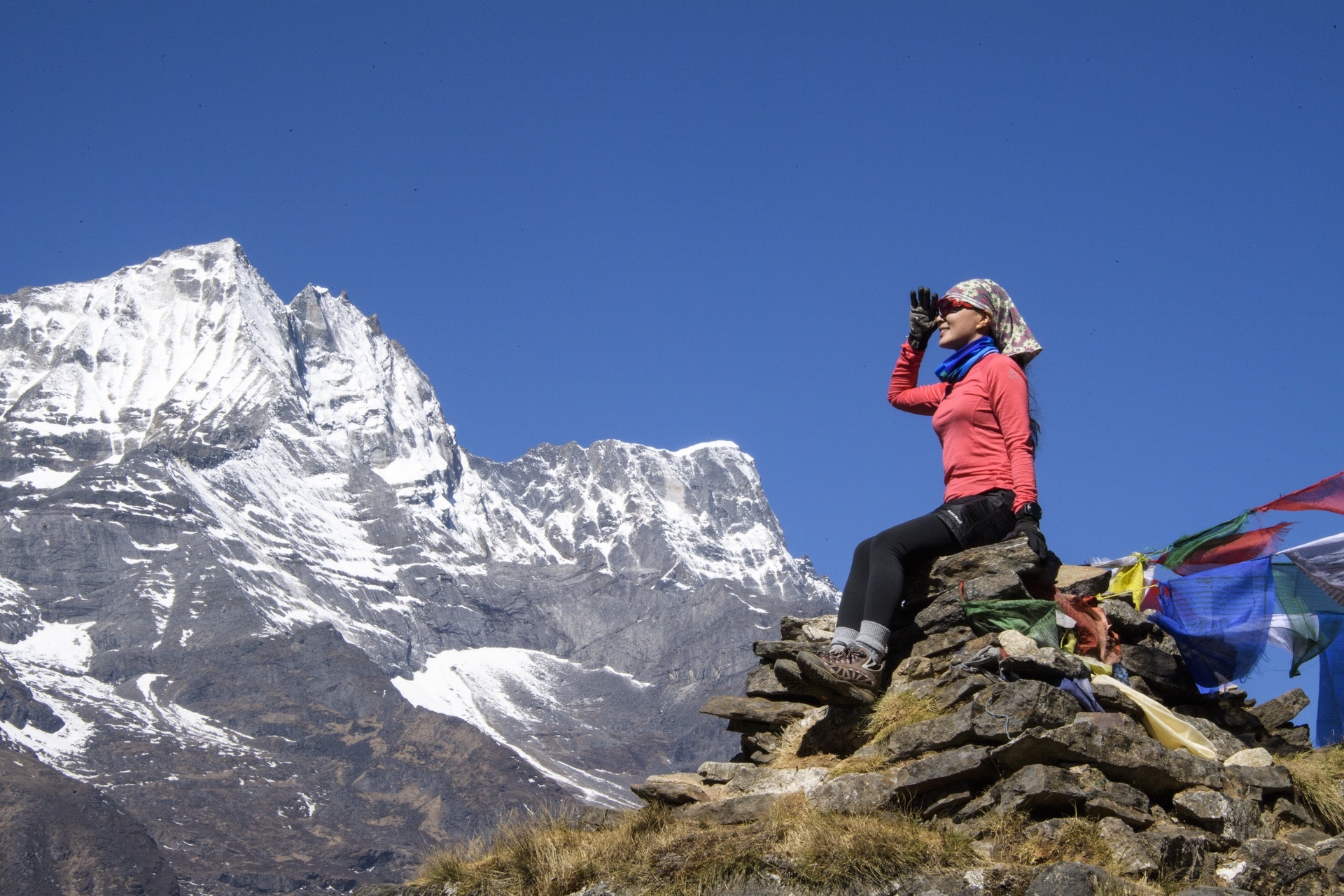


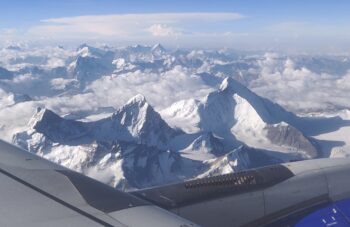
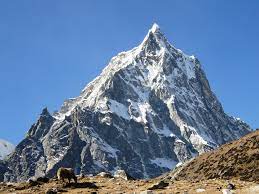
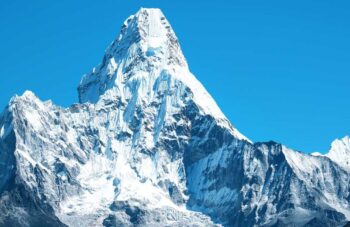
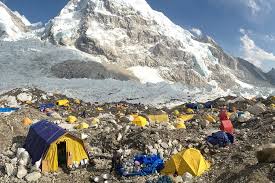
Leave a Reply